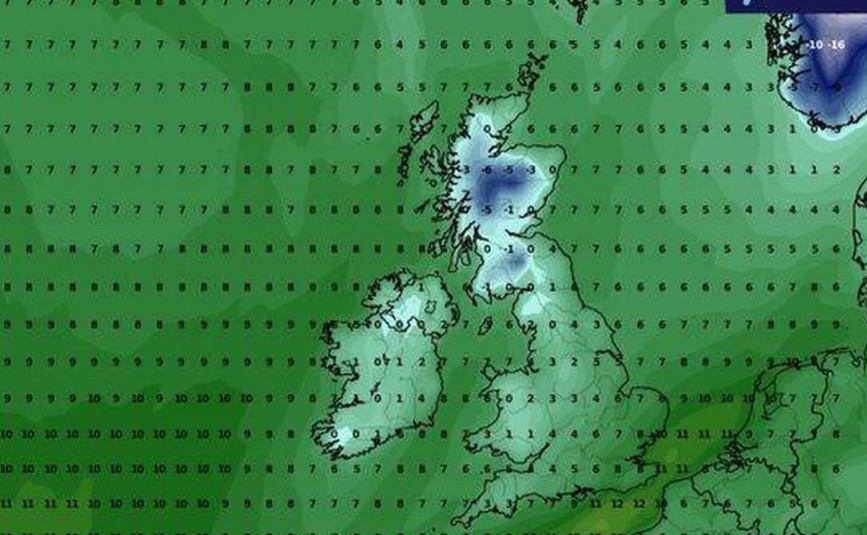Brace yourselves, the UK is on the point of a wintry metamorphosis. Fresh rainfall charts suggest that as many as 25 counties could soon be blanketed in snow, ranging from light dustings to hefty accumulations, as the gleeful season approaches.
When and where does the snow hit?
From around 23 November, an Arctic blast is anticipated to sweep across the country. The bite will first grip Scotland before pushing southwards through northern England, the Midlands, and the corridor of Wales.
Coastal and inland areas likewise may find themselves waking up to frosty mornings and snow-covered scenes.
In the mounds and corridors of Aberdeenshire, snow depths could reach between 18 and 20 centimetres. Snow is likely to fall from Inverness to Perth, while flurries are anticipated across the central belt, including Edinburgh and Glasgow.

Northern England won’t escape; moreover, vaticinations suggest the Pennines, Cumbria, and North Wales will all see snow showers. Areas around Manchester, Newcastle, and Derbyshire could also witness a dusting of the white stuff.
Temperatures on the same date could dip as low as –1 °C to –2 °C in the Highlands, while northern England may hover between 0 °C and 3 °C. The South East will remain milder, with temperatures around 4 °C to 7 °C.
The Counties at Risk
Here’s the full list of counties likely to experience snow this month:
Scotland: Aberdeenshire (coastal and inland), Angus, Argyll and Bute, Dumfries and Galloway, Fife, Highland (Inverness area), Moray, Perth and Kinross, Stirling
England: Cheshire, County Durham, Cumbria, Derbyshire (Peak District), Greater Manchester, Lancashire, North Yorkshire, Northumberland, Shropshire, West Yorkshire.
Wales: Gwynedd, Powys.
Northern Ireland: County Antrim, County Londonderry, County Down.
These regions are expected to bear the brunt of the cold front, with northern and upland areas most at risk of accumulating snow.
Met Office’s Outlook
The Met Office has indicated that some snow is possible later this month, particularly in higher regions: “Whilst the expected weather patterns during late November are very uncertain, there is a greater chance of spells of high pressure during this period, bringing more in the way of dry weather compared to the current weather pattern, which also increases the chances of overnight fog and frost.
There will probably still be some spells of rain, showers, and stronger winds, though, especially in the west. Hill snow is also a possibility, mainly in the north.
Overall, near or slightly above average temperatures are most likely, though some colder spells are also possible, especially should any prolonged settled spells develop.”
In simpler terms, anticipate the unanticipated. Cold spells are on the cards, but how much snow we’ll actually see remains uncertain.
Snow in the UK depends on more than just enduring temperatures. humidity situations, air pressure, and the path of cold fronts all play pivotal roles.
A small temperature shift can be the difference between rain, sleet, or snow. That’s why vaticinations can change fleetly in the run-up to an event.
What can you do?
- Keep an eye on your local forecast, especially if you live in one of the 25 affected counties.
- Prepare for icy roads, frosty mornings, and potential travel delays.
- In rural or high-altitude areas, ensure vehicles and heating systems are winter-ready.
- Even if snow doesn’t settle, expect colder nights and slippery conditions.
The latest UK snowfall forecast suggests a wintry shake-up is on the horizon. Whether it’s a brief dusting or a deep snap, much of the country could soon be waking up to scenes straight out of a Christmas card.
Keep your fleeces ready, downtime is arriving beforehand this time.






